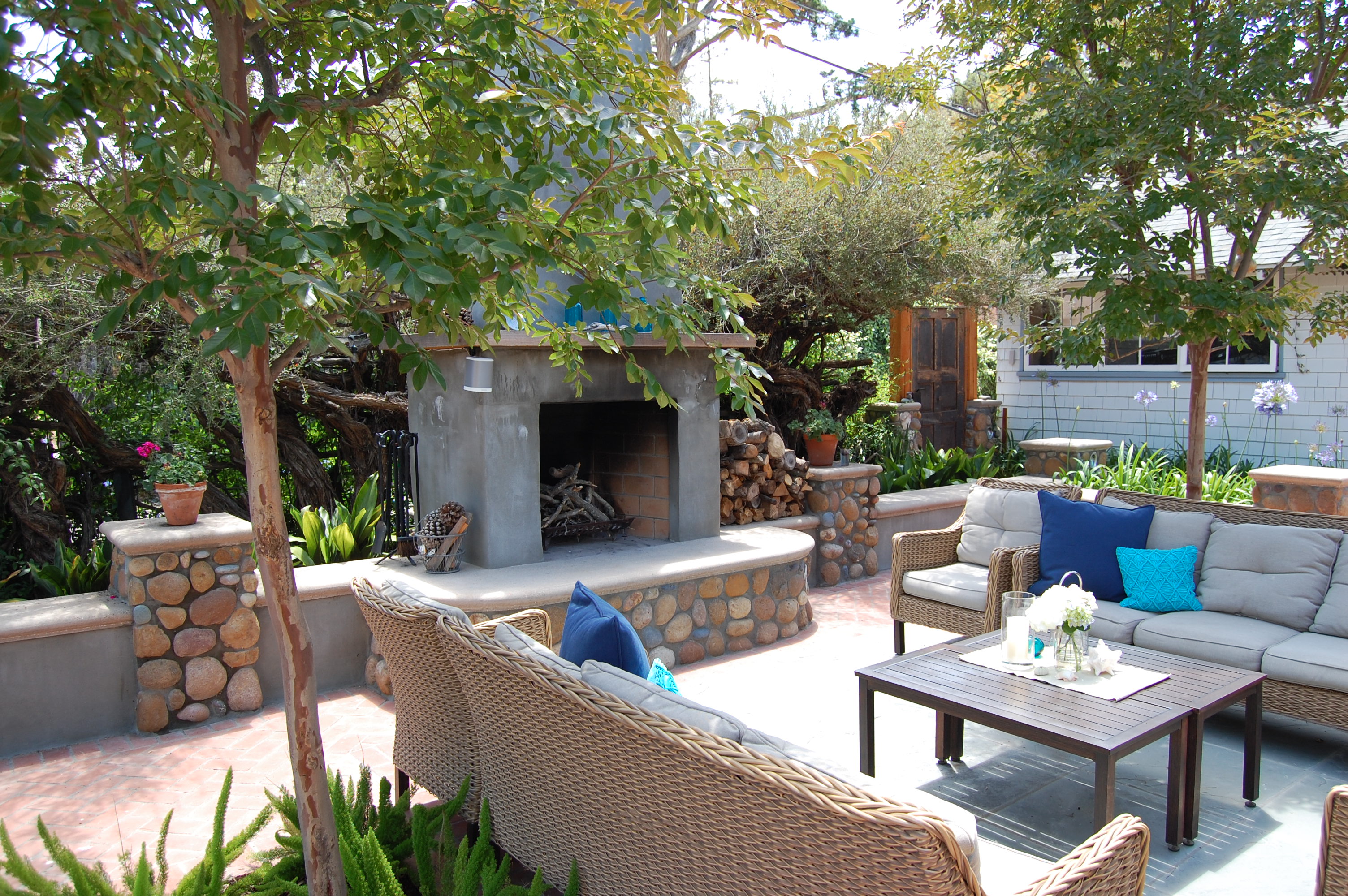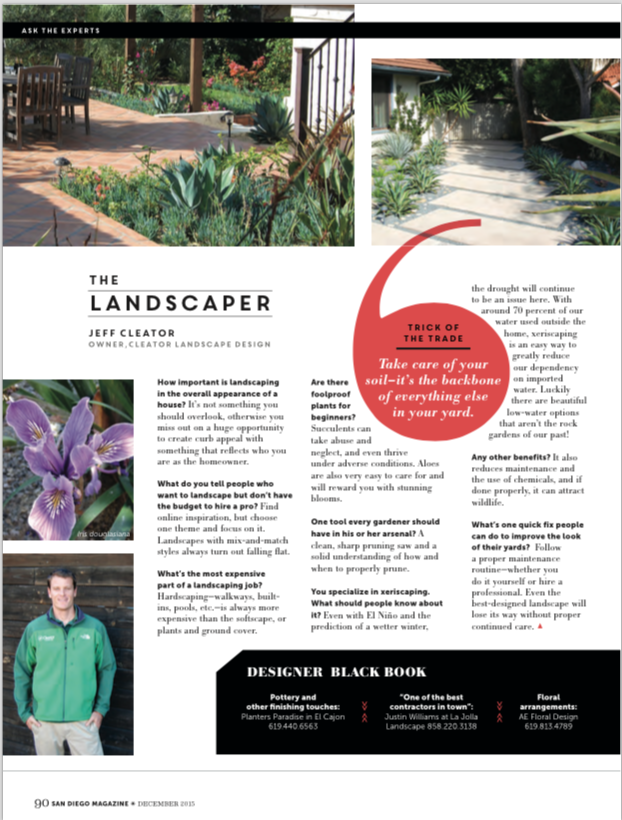Landscaping design in San Diego can mean different things to different people, but the common thread is drought resistant. For good reason, we are in the midst of a serious drought and with all the other factors such as increasing regional temperatures and population growth we must do what we can to save every drop. I’m not promoting we all leave with barren landscapes, far from it. Properly landscaped areas help reduce run off, cool surround air, give wildlife a home, and clean the air among many other wonderful things we all need to survive. So today I wanted to share with you a few San Diego appropriate plants that you can incorporate into your garden.
California Fushia with its scarlet flowers which hummingbirds adore and it ability to handle tough conditions, its a real standout.
Matilija Poppy has large white blooms with the feel of paper mache, great drainage is a must.
Deer Grass is a beautiful native grass that can handle a wide array of conditions without missing a beat.
Cleveland Sage is another native that displays great blueish purple flowers while provided a nice aroma.
Coyote Bush is a “go to” plant for the worst conditions you have to face here in San Diego.
All these plants plus many others can beautify your without putting additional strain on our environment.
If you would like to have Cleator Landscape Design create a beautiful outdoor space that is easy on the environment, please contact us at 619.917.3644




